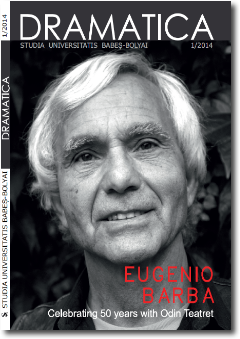THE CHRONIC LIFE
THE CHRONIC LIFE
Author(s): Eugenia SarvariSubject(s): Theatre, Dance, Performing Arts
Published by: Studia Universitatis Babes-Bolyai
Summary/Abstract: The stage looks like a ship trapped in ice (a paper canoe?). A piece of ice hanged in a hideous slaughterhouse hook and drips regularly, as if giving a measure of time (of remaining life?). The walls of the drifting ship – the synopsis mentions the action takes place in the year 2031, in a post-civil war era, in Denmark or in other European countries, several countries at the same time – are “filled” by the spectators arranged in stairs. Furthermore, the deck on which the characters will act can also be the bed of the river whose waters carry the performance currents, or perhaps the raft or the island occupied by the lives wrecked by the war. The raft is a place of salvation, or, quite the opposite, of destruction. A young man enters this island/deck/ raft. His eyes bandaged – they prevent his from seeing the obvious: life is a chronic disease; by entering a life that has become chronic he enters, in fact, eternity. Death as resurrection towards a new life. The Black Madonna, wearing a costume heavily adorned with enigmatic symbols, reminds me of the Black Virgin at the Daurade, her dress now at risk of turning to dust. In a multicultural space, each hero speaks their own language – echo of the director’s permanent feeling of displacement when, in his adolescence, he chose to leave from the southern Gallipoli to the cold Scandinavia – going from Spanish to Danish, to a Chechen-accentuated English and even to Romanian.
Journal: Studia Universitatis Babes-Bolyai - Dramatica
- Issue Year: 2014
- Issue No: 1
- Page Range: 51-52
- Page Count: 2
- Language: English

